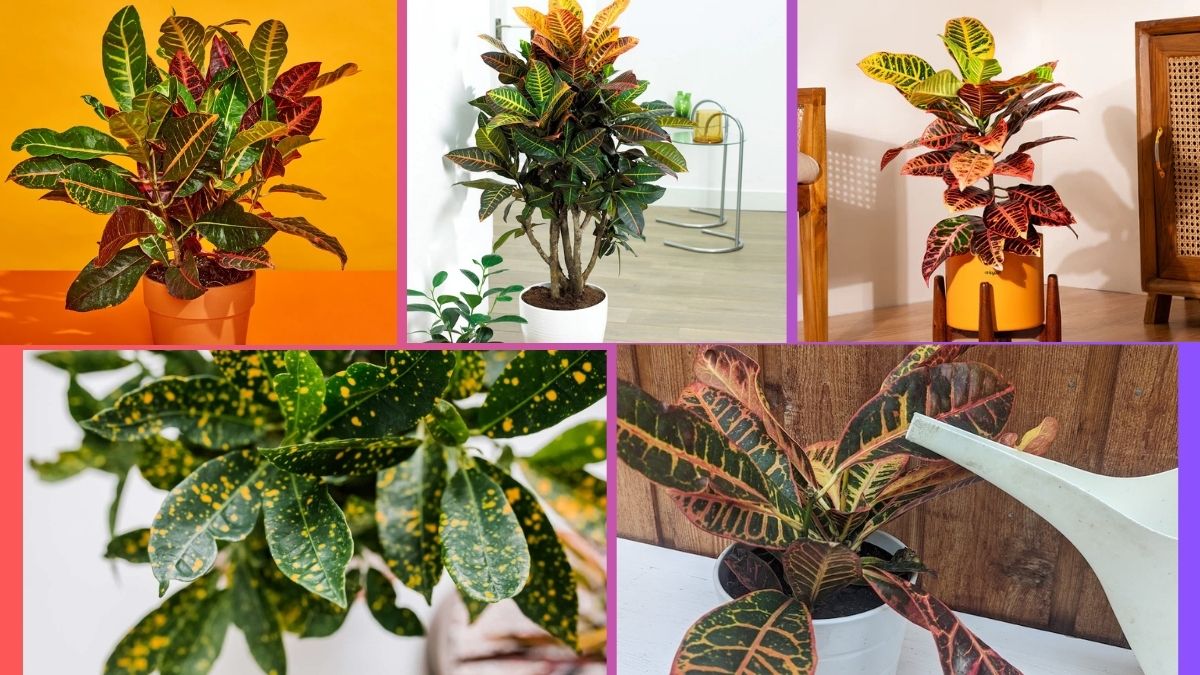Croton plants (Codiaeum variegatum) are among the most striking and colorful houseplants, prized for their bold, multi-colored leaves that feature shades of green, yellow, orange, red, and even purple. Native to tropical Southeast Asia and the Pacific Islands, crotons are popular in both indoor and outdoor settings for their vibrant foliage and ornamental value.
However, while crotons are relatively hardy and adaptable, one aspect of their care that demands careful attention is watering. Too little or too much water can quickly cause stress, leaf drop, or even plant death. This makes understanding their water needs essential for maintaining a healthy, thriving croton.
So, the big question is:
How often should you water a Croton plant?
This comprehensive guide explores everything you need to know about watering crotons — including ideal frequency, factors that affect water needs, signs of underwatering and overwatering, proper watering techniques, and expert care tips to keep your croton healthy and colorful year-round.
Introduction to Croton Plants
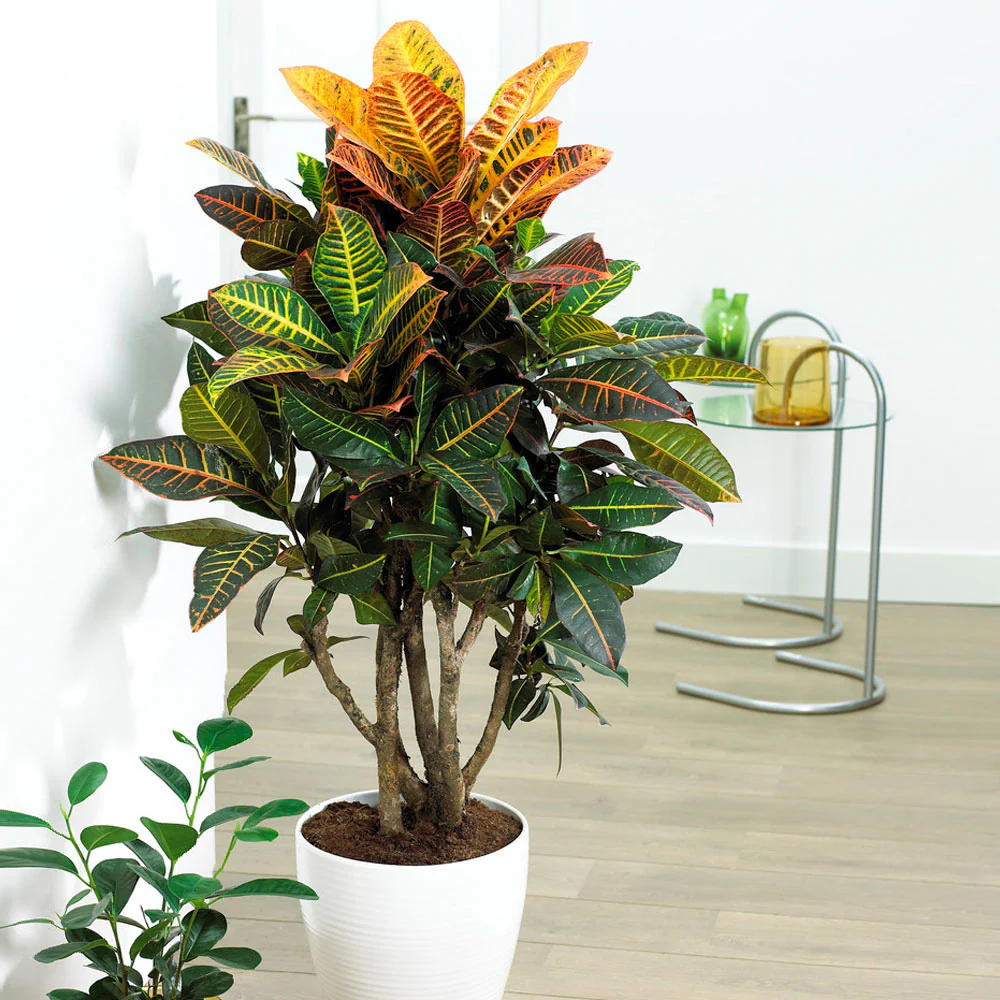
Crotons are tropical, evergreen shrubs with thick, leathery leaves that grow in a variety of shapes and patterns. They’re especially admired for their vivid coloration, which makes them a popular choice for brightening up indoor corners, patios, and gardens.
While crotons are naturally resilient in their native, humid environments, growing them indoors or in non-tropical regions requires carefully replicating those conditions — with watering playing a crucial role.
How Often Should You Water a Croton Plant?
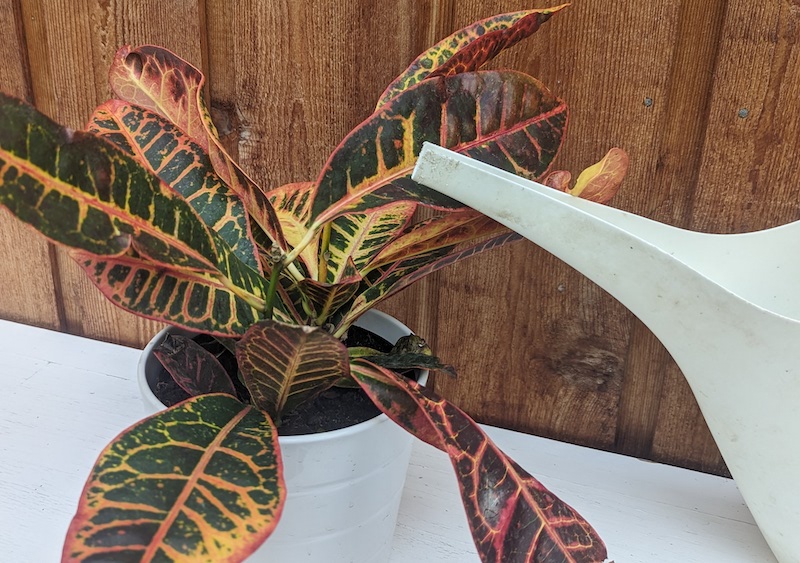
On average, you should water a croton plant once every 4–7 days during its growing season (spring and summer) and once every 7–14 days during its dormant season (fall and winter).
However, the actual frequency depends on factors like temperature, humidity, light exposure, pot size, and soil type. The most reliable method is to check the top inch of soil and water only when it feels dry to the touch.
General Watering Rule:
- Spring & Summer (active growth): Every 4–7 days
- Fall & Winter (dormancy): Every 7–14 days
Important: Rather than relying solely on a calendar schedule, always monitor soil moisture and environmental conditions.
Factors That Affect Croton Watering Frequency
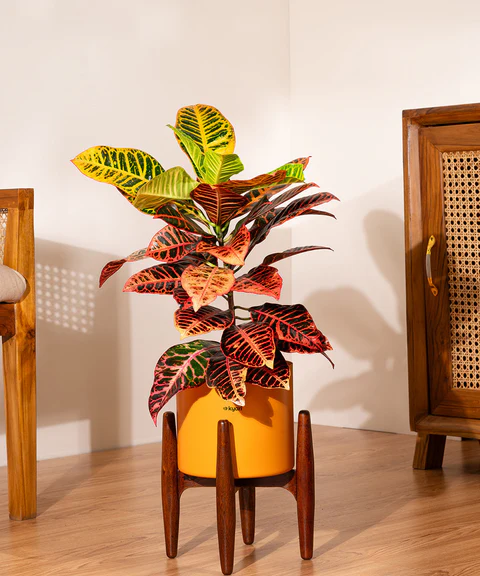
Several factors determine how quickly your croton’s soil dries out and how often you should water it. Being aware of these conditions ensures healthier growth and prevents common watering mistakes.
Season and Temperature
- Warm months (spring and summer): Higher temperatures, active growth, and stronger sunlight increase water consumption.
- Cooler months (fall and winter): Lower temperatures and reduced growth slow down water needs.
Indoor Climate and Humidity
Crotons love high humidity (50–70%). In dry, heated, or air-conditioned spaces, the soil dries faster, requiring more frequent watering.
Low humidity can cause leaf drop or browning edges, making humidity control as important as soil moisture.
Pot Size and Material
- Smaller pots dry out faster than larger ones.
- Terracotta pots allow water to evaporate more quickly than plastic or glazed ceramic pots.
Light Exposure
Crotons need bright, indirect light for optimal coloration and health. The more light the plant receives, the faster the soil dries out.
Soil Type
Crotons thrive in well-draining, slightly acidic soil rich in organic matter. A dense, water-retentive soil can hold moisture too long and increase the risk of root rot.
Signs Your Croton Plant Needs Watering
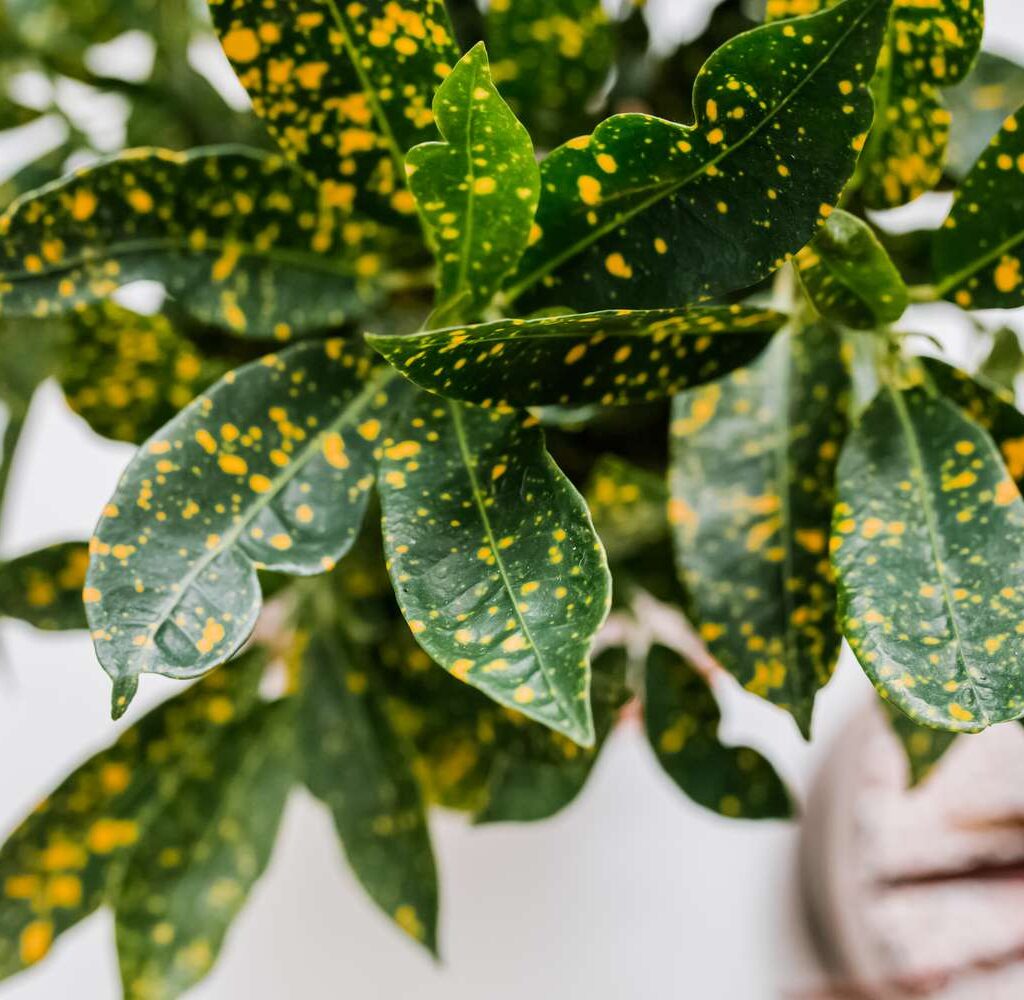
Croton plants communicate clearly when they need hydration. Look for these signs to know when it’s time to water:
Dry Topsoil
If the top 1 inch of soil feels dry when you stick your finger into the soil, it’s time to water.
Wilting or Drooping Leaves
Leaves may become limp or droop when the plant lacks water.
Crispy, Brown Leaf Edges
Prolonged dryness or low humidity often results in dry, brown, and crispy leaf tips and edges.
Slow or Stunted Growth
In the growing season, underwatering can slow the plant’s development and result in dull leaf colors.
Signs of Overwatering a Croton
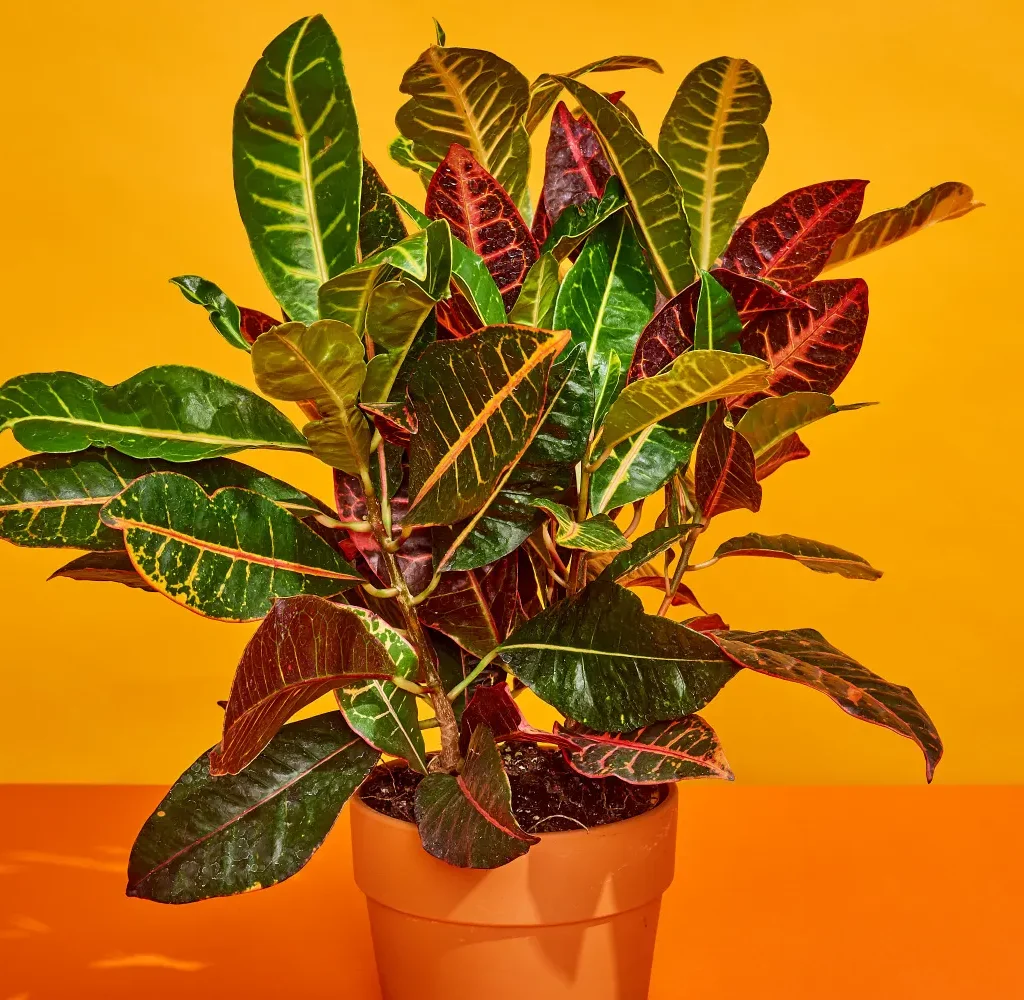
While crotons prefer consistently moist soil, overwatering is a common mistake that can cause serious problems. Watch out for these signs:
Yellowing Leaves
Widespread yellowing, particularly of lower leaves, often signals excessive moisture.
Wilting Despite Moist Soil
Drooping leaves when the soil is still wet indicate overwatering and possible root rot.
Soft or Mushy Stems
Soft, discolored stems at the soil line are a warning of root rot.
Mold or Fungal Growth on the Soil Surface
A persistent layer of mold or fungus signals that the soil is staying too wet for too long.
How to Properly Water a Croton Plant
The correct watering technique is as important as how often you water. Follow these guidelines for healthy, vibrant croton foliage:
Use the “Soak and Dry” Method
- Water the plant thoroughly until water runs from the pot’s drainage holes.
- Discard any excess water collected in the saucer to prevent root rot.
- Wait until the top 1 inch of soil feels dry before watering again.
Tip: Always water at the base of the plant, avoiding wetting the leaves to reduce the risk of fungal problems.
Use Room-Temperature Water
Cold water can shock croton roots. Use lukewarm or room-temperature water for best results.
Check Soil Moisture Before Every Watering
Use your finger, a wooden stick, or a moisture meter to test the soil’s dryness before watering.
Seasonal Watering Adjustments for Crotons
A practical seasonal watering schedule to help adjust your routine:
| Season | Watering Frequency | Notes |
|---|---|---|
| Spring/Summer | Every 4–7 days | Active growth and warmer temperatures increase water use. |
| Fall/Winter | Every 7–14 days | Lower temperatures and slower growth reduce water needs. |
Always check the soil before watering to avoid overwatering in cooler months.
Best Type of Water for Crotons
Croton plants are sensitive to chemicals like chlorine and fluoride commonly found in tap water, which can cause browning leaf tips and reduce foliage vibrancy.
Ideal Water Choices:
- Filtered water
- Distilled water
- Rainwater
- Tap water left to sit for 24 hours
Using these options helps keep your croton’s leaves healthy, colorful, and free from chemical stress.
Additional Croton Plant Care Tips
Beyond watering, here are other care essentials to help your croton thrive:
- Light: Requires bright, indirect light to maintain vivid leaf colors.
- Humidity: Maintain 50–70% humidity; use a humidifier or pebble tray during dry seasons.
- Soil: Use a well-draining, slightly acidic potting mix enriched with organic matter.
- Fertilizing: Feed with a balanced, liquid houseplant fertilizer every 4–6 weeks during the growing season.
- Pruning: Regularly remove dead, damaged, or yellowing leaves to encourage new growth.
- Repotting: Repot every 1–2 years or when roots become cramped.
Why It’s Better to Slightly Underwater Than Overwater
Crotons are more tolerant of slight underwatering than overwatering. While a thirsty croton may droop temporarily, it usually recovers quickly with proper hydration. In contrast, consistently soggy soil leads to irreversible root rot and plant decline.
When in doubt, check soil moisture — and mist the foliage to boost humidity before adding water.
Conclusion
How often should you water a Croton plant?
The ideal frequency is every 4–7 days during the growing season (spring and summer) and every 7–14 days in the dormant season (fall and winter). However, the most reliable method is to regularly check the top inch of soil and adjust your watering schedule based on seasonal changes, light exposure, humidity, and pot size.
By practicing careful soil monitoring, using proper watering techniques, and providing high humidity and bright light, you can enjoy a vibrant, colorful croton that brings bold tropical beauty to your home or garden.
